Italeri 1/72 scale
Waco CG-4 Cargo Glider
by Roland Sachsenhofer

Looking at this plywood and canvas construction, it is hard to imagine the bundle of most remarkable facts associated with this iconic cargo glider.
One thing right up front: with over 13 900 produced, the Waco CG-4 is one of the most built aircraft types in history. This remains a most remarkable fact, even if the Allied strategy of mass deployment of "assault gliders" in large-scale airborne operations such as the Normandy invasion or Operation Market Garden helps to explain this huge production figure.
However, the somewhat smaller GC-4 compared to the better-known Airspeed Horsa was also used in less elaborate commando operations. Remarkably, it was precisely in such operations that the Waco was not regarded merely as a loss device. The CG-4 belongs to that truly exclusive small circle of aircraft that could be picked up and catapulted into the air by a passing tow plane with a "cold start". This must have been a literally hair-raising enterprise in all aspects!
The tow rope of the CG-4 loaded for the return flight - for example with wounded or personnel destined for evacuation - was thereby caught by a C-47 flying by slowly and at a flat angle to the longitudinal direction of the glider. A braking system mounted in the towing cable drum of the C-47 became active, softening the sudden tractive force. According to the pilots' accounts, the take-off was an "unforgettable" experience for the crews of both aircraft involved, but the system itself was quite suitable for everyday use and had been applied on several occasions.
The rescue of the survivors of the C-47 "Gremlin Special", which crashed in the inaccessible mountains of New Guinea in May 1945, achieved particular fame in this dramatic manner. The crew of the crashed aircraft was flown out by three flights of a CG-4, which was "picked up" from the ground by a Dakota in the manner described.
Another remarkable way of getting the CG-4 off the ground was the temporary installation of two auxiliary engines that could be hooked between the struts below the wings and gave the cargo glider self-launching capability. This method was mainly used for ferry flights from the numerous CG-4 production sites scattered around the country to US Army Air Force depots or operational airfields. Anyone who wants to enjoy the most remarkable sight of CG-4s equipped with these "slack sliders" will quickly find what they are looking for after a brief search on the Internet.
The relative smallness of the Waco quickly proved to be a great advantage. With an empty mass of 1769 kilos and a maximum take-off weight of three and a half tonnes, the aircraft required considerably shorter landing zones than the larger AS. Horsa. Accordingly, the CG-4 was not only used in the large airborne companies, but was preferred for smaller operations.
The cargo glider carried up to 13 fully equipped infantrymen into combat, alternatively equipment such as a Jeep Willys or a 75mm howitzer could be transported. The landing gear, mounted on long struts, could be jettisoned after take-off, and the landing was then made on several skids, the braking effect of which helped to reduce the landing distance. For quick unloading, the side doors were unlocked and the entire nose section, including pilot seats and spartan cockpit, was folded up. In view of the rather shirt-sleeved conditions of the time, it is not surprising that a wooden peg carried with the aircraft was simply clamped under the raised nose section to lock it in place.
The model received its baptism of fire in July 43 during the Allied landing in Sicily. In the following years, the CG-4 could be encountered in all theatres of war; beyond Europe and Africa, the Waco was able to prove its qualities above all in China, Burma, India and the Southwest Pacific.
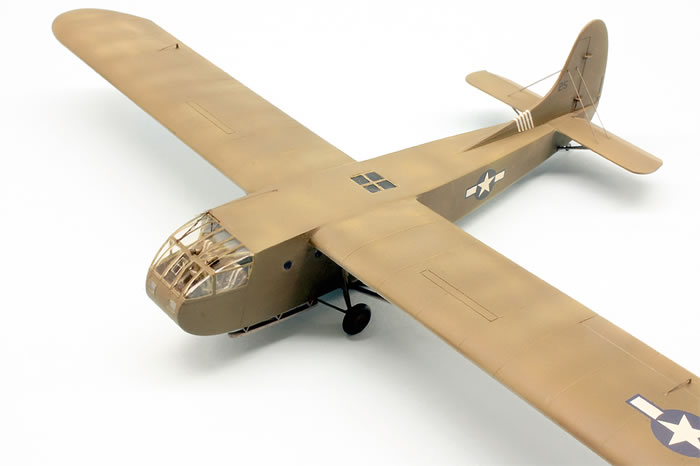
One of the largest Allied airborne operations of the war up to that time was "Operation Thursday", which began in Burma on 5 March 1944. The operational objective was to land several brigades well behind Japanese lines to support an Allied offensive in the area around the Japanese-held northern Burmese city of Indaw. The operation started with the airlift of the 77th (Indian) Brigade in the "Broadway" landing zone, but it almost ended in disaster: in order to drop the entire unit as quickly as possible, two CG-4 gliders each were towed by a C-47. This overload in the hot and humid tropical climate, however, led to overheated engines, the required flight altitudes could not be reached in some cases - and as a result many of the 54 CG-4s of the first wave were lost.
The landings in the "Chowringhee" and "Aberdeen" zones, which took place a little later, were more successful. By the end of March, 10,000 men had been landed. To support their advance in the impassable jungle, 1,000 donkeys or mules were also flown in with the cargo gliders - a novelty in the deployment of airmobile units. In the course of "Thursday", the flying out of wounded was also practised on a large scale for the first time in the procedure described at the beginning.
My model represents one of the Waco CG-4s of the 1st ACG (Air Commando Group) used during "Thursday". "Old Crow" was stationed in Lalagath, Burma at the time of the action.
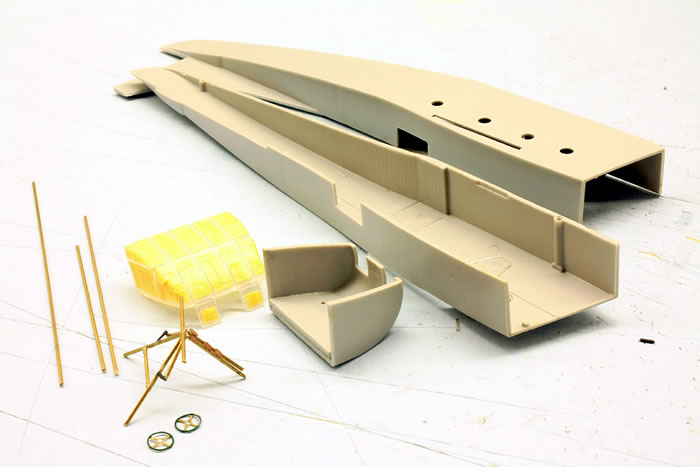
The decals are taken from the extensive and highly recommended sheet "Forgotton Operations Thursday March 1944" (No. 72025) by DP Casper. By the way, the sheet contains markings for several other Allied and Japanese aircraft that were used in "Operation Thursday"; this concept could be quite interesting for some modellers!
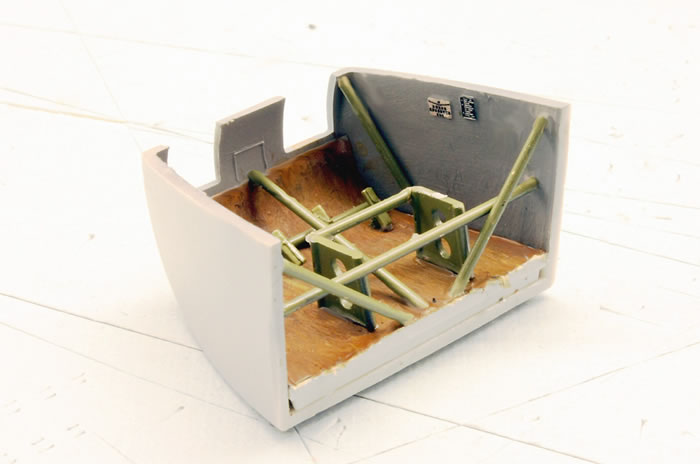
After acquiring the Italeri kit I spent some time looking for usable decals - and above all an interesting model. The original decals are simply no longer usable after the long time the kit has been around.
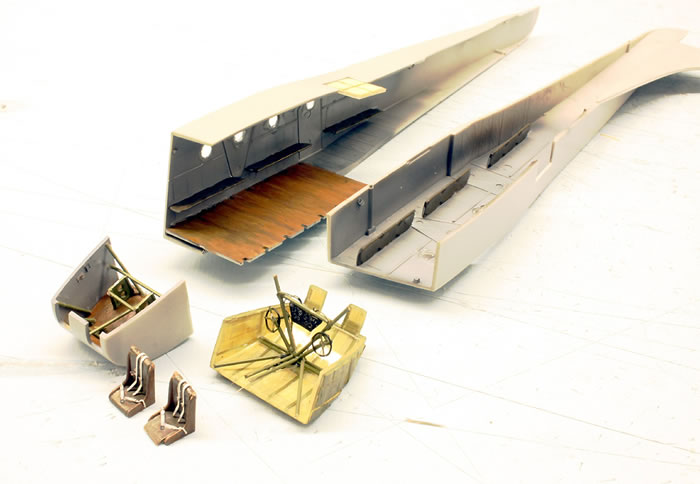
My edition probably dates from the depths of the eighties; the decal sheet, which was in any case somewhat sparsely equipped, already signalled by its tightly rolled condition and the violent yellowish discolouration of the markings that it no longer wanted to be used.
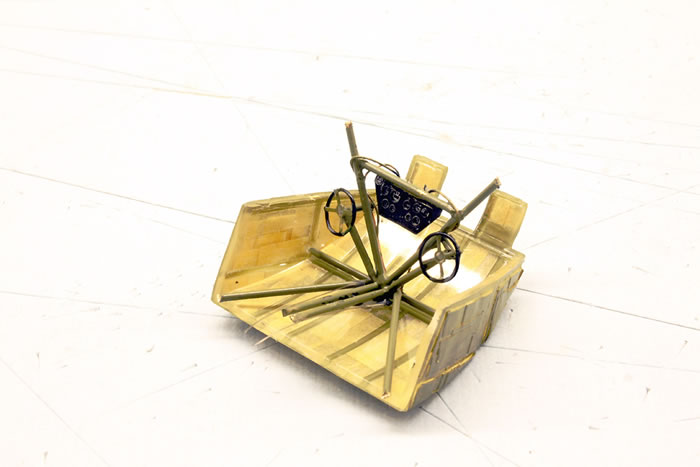
The plastic parts themselves are quite usable, even if a few strong corrections are absolutely necessary in some central places. Above all this concerns the cockpit. The Italeri version provides here two seats, two control sticks and otherwise emptiness. This is not correct in all points.
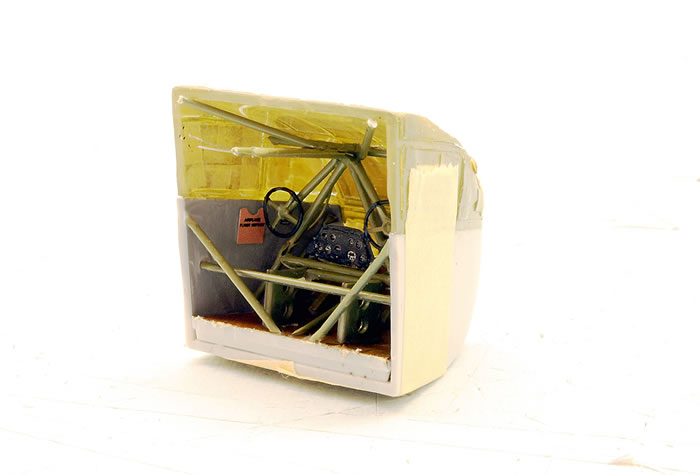
The well visible interior of a CG-4 is so full of struts and wiring in the original that one will hardly get around rebuilding this framework in the essential parts. I have done this with matching brass tubes, which have been joined together with some scratched parts to create an interior that is close to the prototype and meets my requirements. I am proud to say that I even copied the steering cables running along the upper cockpit glazing. Furthermore, two self-made steering wheels were integrated into the construction, the CG-4 did not have "sticks".
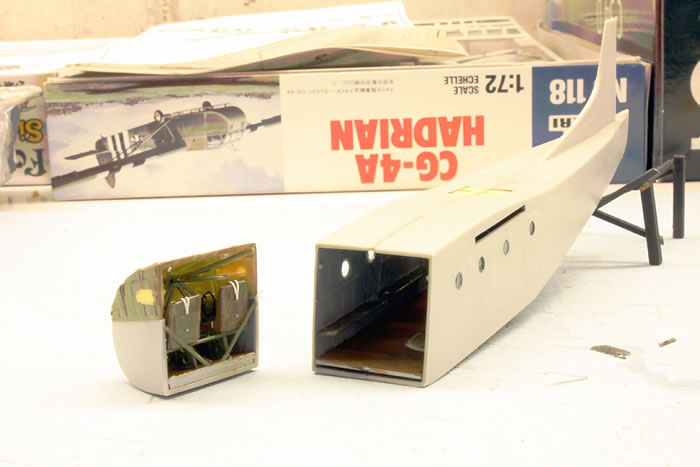
The construction itself remained extremely exciting until the end, because the question of how all these efforts around the interior of the easily visible cockpit would finally look and work could only be answered after the final removal of the transparent masks.
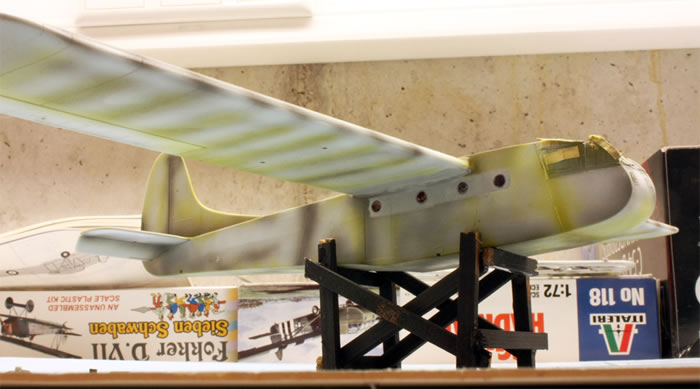
Almost all struts, braces and rudder balance weights as well as the pitot tube or the framework supporting them were scratch built by myself. If available at all in the kit, the Italeri parts were much too rough to be used.
In conclusion, I can say that this build led to some new modelling experiences and many historical facts that were new and quite interesting to me. The subject of "cargo glider" turns out to be more fascinating with every project than I suspected at the beginning!
As a small postscript, I would like to add a nice anecdote on the subject of "swords into ploughshares". In view of the thousands and thousands of CG-4s for sale after the war, a strange phenomenon soon emerged: the spacious interiors and the good quality of workmanship helped the useless cargo gliders to find a second, civilian life: Countless CG-4 hulls soon populated the streets, lakes and forests of the USA in a converted state as caravans, garden hunting or fishing huts. A worthy, because peaceful end for one of the most built aircraft in history!
If you are interested in the building process, please have a look here on Scalemates:
https://www.scalemates.com/profiles/mate.php?id=10148&p=albums&album=70433
As ever, remarks will be appreciated: ro.sachsenhofer@gmx.at
Model, Images and Text Copyright ©
2021 by Roland Sachsenhofer
Page Created 29 June, 2021
Last Updated
29 June, 2021
Back to HyperScale Main Page

|
Home
| What's New | Features | Gallery | Reviews | Reference | Resource Guides | Forum |